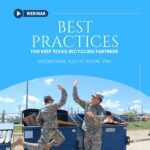by Mac Davenport, KTB Summer 2023 Communications Intern
Cover Photo by Maegan Lanham
Everyone has an important role to play in preserving our beloved outdoor spaces. Whether swimming in a local river, going for a day hike, or embarking on a backcountry camping trip, it’s essential to be conscious of the impact your activities have on the ecosystems you visit. We have a duty to respect the plants and animals who call these spaces home, as well as the physical environment itself.
The Seven Principles of Leave No Trace provide an accessible, standardized framework for anyone visiting outdoor spaces to minimize their impact on our environment. These principles can apply to any outdoor space, beyond backcountry areas and public lands.
Leave No Trace Seven Principles
1. Plan Ahead and Prepare
- Research the area you plan to visit to understand any regulations and special concerns.
- Prepare for extreme weather, hazards, and emergencies.
- Prepare equipment, food & clothing for comfort, safety, and low-impact, low-waste qualities.
- Avoid overcrowding; schedule outside of high-traffic times, and stick to small groups.
- Use a map and compass to eliminate the use of rock cairns, flagging, or marking paint.
2. Travel and Camp on Durable Surfaces
- Stick to maintained trailed and designated campsites. Durable surfaces include rock, gravel, and dry grasses or snow.
- Camp at least 200 feet from lakes and streams.
- Altering a site or creating your own campsite is not necessary.
- In popular areas:
- Focus on existing trails and campsites.
- Walk single file in the middle of the trail, even when wet or muddy.
- Keep campsites small. Focus activity in areas where vegetation is absent.
- In undisturbed areas:
- Disperse use to prevent the creation of campsites and trails.
- Avoid places where impacts are just beginning.
3. Dispose of Waste Properly
- Pack out ALL trash, leftover food, litter, and non-natural items. Do not burn trash.
- Utilize toilet facilities where possible. Otherwise, deposit solid human waste in catholes dug 6-8 inches deep at least 200 feet from water, camp, and trails. Bury toilet paper deep in a cathole or pack the toilet paper out. Cover and disguise the cathole when finished.
- To wash yourself or your dishes, carry water 200 feet away from waterways and use small amounts of biodegradable soap. Scatter strained dishwater.
4. Leave What You Find
- Preserve the past: do not touch cultural or historic structures and artifacts.
- Leave all parts of nature as you find them, including rocks and plants.
- Avoid introducing or transporting non-native species.
- Do not build structures, furniture, or dig trenches.
5. Minimize Campfire Impacts
- Use a lightweight stove for cooking and enjoy a candle lantern for light to avoid lasting environmental impacts.
- Where fires are allowed, use established fire rings, pans, or mound fires.
- Keep fires small. Use down and dead wood that can be broken by hand.
- Burn all wood and coals to ash, put out campfires completely, then scatter cool ashes.
6. Respect Wildlife
- Observe wildlife from a distance. Do not follow or approach them.
- Never feed animals. Feeding wildlife damages their health, alters natural behaviors, and exposes them to predators and other dangers. Protect them and your food by securely storing food and trash.
- Control pets at all times, or leave them at home.
- Avoid wildlife during sensitive times: mating, nesting, raising young, or winter.
7. Be Considerate of Other Visitors
- Be courteous and respectful of others to protect the quality of their experience. Yield to other users on the trail.
- Greet riders and ask which side of the trail to move to when encountering pack stock.
- Take breaks and camp away from trails and other visitors.
- Avoid loud voices and noises.
© Leave No Trace: www.LNT.org
Learn more details about the Leave No Trace Principles and how to implement them in your own outdoor activities.
History of Leave No Trace
The Leave No Trace concept emerged in the mid-20th century, as wilderness recreation exploded in popularity and the environmental movement took hold in the US. Outdoor leaders noticed impacts to our wildlands from increased recreation, including destruction to vegetation and other effects of overcrowding. Various sources began to develop educational messages and programs for low-impact recreation, but guidelines were inconsistent.
Beginning in 1987, a “no-trace” program emerged for wilderness and backcountry travel, through joint efforts by the U.S. Forest Service, National Park Service, Bureau of Land Management, and the National Outdoor Leadership School. They developed science-based educational materials to promote low-impact outdoor recreation. In 1993, land management agencies, nonprofits and members of the outdoor industry came together for the Outdoor Recreation Summit and formed the Leave No Trace organization. By 1999, they had established the standard Seven Principles which exist today. Today, Leave No Trace continues to have a far-reaching impact as a national nonprofit organization by conducting conservation initiatives, education, training, research and outreach.
It’s important to note that the concept of minimizing impact in the outdoors is not new. Environmental protection and stewardship has been a fundamental practice for the indigenous peoples who have occupied our lands for centuries. We recognize the long history of indigenous knowledge which informs conservation efforts today.

Going Beyond Leave No Trace
Leave outdoor spaces better than you found them. You can plan or participate in a litter cleanup in your local outdoor spaces! Our annual fall cleanup program, Fall Sweep, is open to all Texans who want to clean up their community. Plan your own cleanup or visit our event calendar to find a cleanup near you. KTB provides participants with free cleanup supplies, a planning toolkit and tips and tools to make your cleanup successful. Join us in making Texas the cleanest, most beautiful state in the nation!

